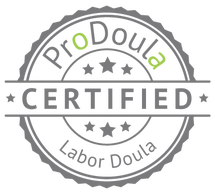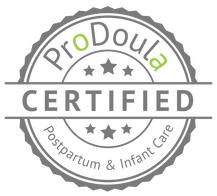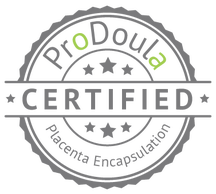|
If there's one shared common concern among breastfeeding parents, it's whether or not one is making enough milk for their baby. With solid support and proven methods for building milk supply, parents can enjoy breastfeeding with confidence. Where It StartsBreast and mammary tissue begin developing while a baby girl is in utero, with dramatic changes happening during puberty and pregnancy. (1) During pregnancy the breasts make a small volume of milk called colostrum, but after giving birth (specifically, after the placenta is released) hormone changes signal the breasts to switch to a higher volume of milk production.(2) This is what is referred to when talking about someone's milk "coming in." Hormonal, genetic, and certain physical factors can affect the ability a woman has to produce a full milk supply- that is, the ability to exclusively breastfeed without requiring additional nutritional supplementation for baby- which is why I strongly encourage a prenatal consult with an experienced IBCLC to create a feeding plan to optimize success. Parents struggling with breastfeeding and lactation have reported an increased incidence of PMADs.(3) Expert guidance can alleviate concerns and boost parental satisfaction with their infant feeding goals, whether that is exclusive breastfeeding or not. What To Do FirstEarly, efficient, and frequent removal of milk are key to building a solid milk supply.(2) I've worked with clients who worried their ability to breastfeed would be marred by an immediate separation from their baby at birth, but please be encouraged to know that we lactation consultants are well-equipped to support families in all circumstances, and we know it's often about playing the long game and making short-term goals along the way. If Your Baby Is Able to Feed at the Breast
If Your Baby Is Not Able to Feed at the Breast
What About The Cookies?Look, lactation cookies and other frequently recommended foods can be delicious- but they aren't magic boosters for your supply. Various herbal and medicinal galactogogues exist, but please please work with an experienced IBCLC (and herbalist) before ingesting various herbal blends and teas with snazzy marketing on Insta. Many factors need to be taken into consideration before trying one that may be appropriate for your unique body and circumstances.(7) Cultures around the world follow traditional postpartum healing practices, and this often includes special lactogenic foods to eat and drink as well. Science may not have answers as to why these practices are effective, but that doesn't mean new parents should relinquish their traditional diets. Eat well to nourish your body and enjoy the love and tender care your community surrounds you with. The Bottom LineDon't stress over spending $$$ on anything promising to be the magic trick to boost your supply. Meet with an IBCLC and get all your bases covered; make sure baby is breastfeeding well and you have a solid feeding plan with achievable goals in place. You can drink all the so-called milk-making teas in the world, but nothing is as effective as properly removing milk from the breasts and signaling your body to keep up with the demand for more! Sources: 1) Normal Breast Development and Changes, Stanford Children's Health 2) How does milk production work?, Kelly Bonyata, BS, IBCLC 3) Breastfeeding struggles Linked to Postpartum Depression in Mothers, The Conversation 4) Give 'Em Some Skin, Stanford Children's Health 5) An Audio Galactogogue, Academy of Breastfeeding Medicine 6)Increasing breast milk production for premature infants with a relaxation/imagery audiotape, Stephan Feher, et al 7) Why you won't hear me suggest galactogogues, The Boob Geek
0 Comments
Leave a Reply. |
Categories
All
|
connect with Southern Ohio Birth Services on social media
© COPYRIGHT 2015 SOUTHERN OHIO BIRTH SERVICES, LLC. ALL RIGHTS RESERVED.
Southern Ohio Birth Services serves clients in the following communities: OHIO: Adams County, Brown County, Clermont County, Clinton County, Hamilton County, Highland County, Pike County, Ross County, Scioto County, and Warren County. KENTUCKY: Boone County, Bracken County, Campbell County, Kenton County, and Mason County. INCLUDING THE CITIES OF: Anderson, Batavia, Bridgetown, Chillicothe, Cincinnati, Colerain, Erlanger, Florence, Fort Mitchell, Georgetown, Hillsboro, Madeira, Mason, Maysville, Middletown, Milford, Montgomery, Mt Healthy, Mt Lookout, Mt Orab, New Richmond, Northside, Oakley, Peebles, Portsmouth, Union, Waverly, West Union, Westwood, and Wilmington.






